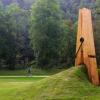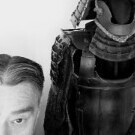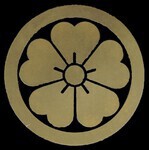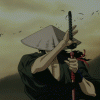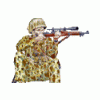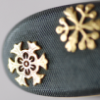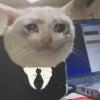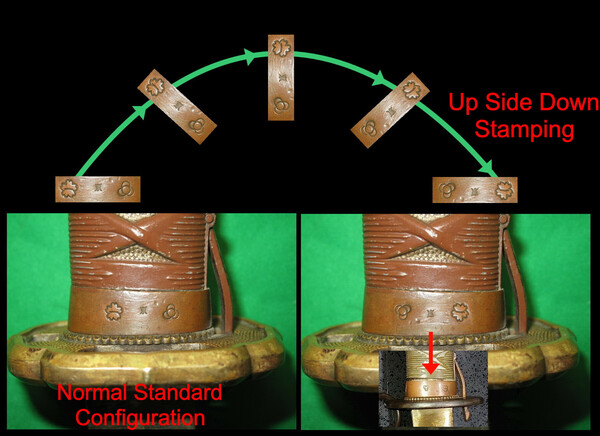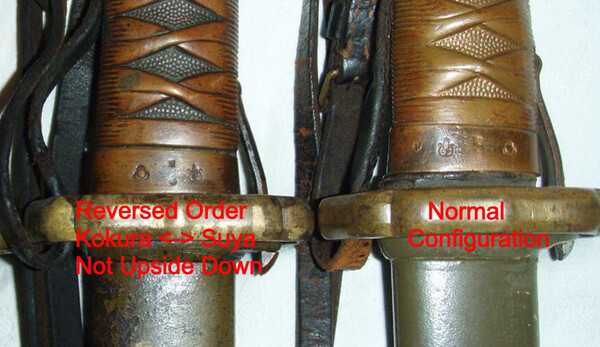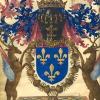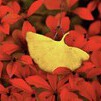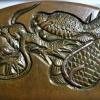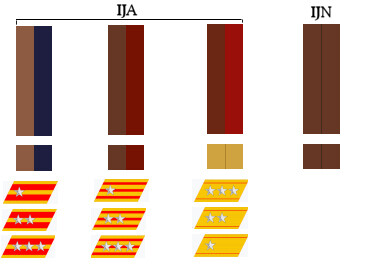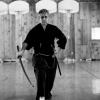Leaderboard
Popular Content
Showing content with the highest reputation on 10/12/2021 in all areas
-
2 points
-
Item No. 130 Tsuba in copper with bronze and brass facings , copper , shakudo and gold inlays 7.40cm x 6.90 cm x 0.50 cm Subject of the immortals Chinnan and Chokaro , Pine tree on reverse signed Miboku Masayuki , 18th Cent. Where to start with this ? A depiction of the two Sennin releasing a dragon from an alms bowl and a horse from a gourd . The detailing is not apparent until you study the scene carefully , at many different angles under a light source. From the scales on the dragons back , to the hairs on the horse's mane and tail , the three dimensional modelling of the faces and the patterns on their robes , this is all work carried out with the greatest care . On the reverse , the pine tree is a well known Hamano school characteristic but I have never seen one as good as this. The remnants of spider webs just disturbed by a hint of breeze give a wonderful dynamic to the composition and gold inlays on the trunk of the tree do not betray their presence until viewed in the correct light. The signature is very confidently and clearly incised - it purports to be that of a Big Name - Shozui , the founder of the Hamano School . Can anybody comment on this after reference to Wakayama or Haynes ? The reverse also carries an acquisition number which suggests that it was once part of a large collection. The file photographs flatten out and obscure most of the fine details on this piece - I have attempted to give a flavour of this with some more detailed pictures taken at different angles but , perhaps as it should be , this needs to be examined in hand to fully appreciate.2 points
-
Sad news indeed. Larry was a great guy, one I have known for years. May you Rest in Peace. Hope the scum bag who robbed him gets what he is due!2 points
-
I knew Larry for a great many years I first met him in Chicago at my first show I had a set up and they had closed the room up and I didn't know, security wasn't letting anybody in I tried to get in and they ushered me out, I said that's kind of rude , there was this guy with kind smile and said come on over to the room I'll show you some swords I and a few other guys went to his room and that's where I fell in love with real Nihonto not just swords I bought and sold over the years at gun shows but the real deal I'll never forget Larry's kindness considered him a great friend, rest in peace my brother2 points
-
2 points
-
Thanks all. Grandads original sword was a type 98 in a type 95 scabbard. As a boy i didnt realize that the scabbard was a mismatched NCO scabbard, i only knew that the side latch on the sword didnt mate. I remember it well. The saya on this sword does match. It is not black paint but a dark green over the typical lighter olive green paint. Someone along the way has scratched "JP Ha cc430702" into the blade (electropencil) and scabbard. The scabbard also has the remnants of a heavy masking tape with "430702" still visible. Here is the sword with the Type 38 rifle and bayonet that Grandad gave to my father. Ive fired it and it still holds a good group.2 points
-
It's not the script (all the kanji on this tag are still in use today). It's more likely the condition of the tag and the folds and shadows and smudges making it difficult to read. One often hears the "its ancient script" excuse as a way of avoiding the embarassment of not being able to read sword tags - or maybe its a way of saying "this tag is too smudged to read clearly", but they don't want to cause you embarassment. Anyway: One Guntō sword Length: 2 shaku, 2 sun Unsigned (spelled wrong, but understandable) This sword belongs to: Chiba Prefecture, Chōsei-gun, Yatsumi-mura the name is too badly smudged for me to read it, but maybe someone here can decipher it.2 points
-
1 point
-
Scumbags are everywhere - it shouldn't happen to nice guys like Larry. Lyme Disease is a vastly under-rated and misunderstood disease, like Chronic Fatigue Syndrome. I'm saddened to read that Larry was burdened with Lyme for 16 years. Thank you Ray for letting us all know and thanks to Chris Bowen for a heartfelt Obituary. Stephen's story underscored for me that good people are what is the best about Nihonto collecting. RIP Larry. BaZZa.1 point
-
Thanks so much Morita-san, I didn't see moto at all. Kind regards, Ray1 point
-
The attribution is on the other side of the papers, but I can see from the ink through the paper that it does say Kodai Hoan. Given that there were many many generations, I personally interpret kodai Hoan to mean anything after the 3rd gen. That Kodai thing varies from school to school, and one way of interpreting it is to say "we don't know, but not the early guys". One of the generations was a bit of a troublemaker and got the family demoted from making tsuba. They had a long history as ironworkers, I think for boats and such? Probably the only bit of help I can give is that the fill in of the sukashi with gold was probably done later. With this design of tsuba, it seems to have been a popular thing. I have seen them filled in with gold, silver, yamagane, shakudo. This is one of the cleaner examples that I remember. That many fillings, and one or two tend to get knocked out. Whatever f/k you chose, I would recommend iron. Whether or not any gold on the f/k is up to you. Ones like Fords being iron with gold shitodome is probably the direction I would personally go, though it might be a bit too symetric for the Japanese asmyetric mindset. Curran1 point
-
1 point
-
I apologize for not thanking all the responders earlier! My bad; got distracted and forgot (old age) about this post (and the lead up and follow up to SF tokenkai). As atonement, another daisho, put together at that show. Noticed one on a table and realized I had looked at something like it very recently on JAUCE, so picked it up and lucked out on the other. Interesting that the sort of necesary small differences involve one with chisel marks arcing clockwise, the other one has them going counterclockwise. john1 point
-
1 point
-
1 point
-
Michael, this is a relatively new group, of which David Thatcher is the “Liaison Manager”. https://m.facebook.com/pg/katchushinkokyokai/posts/1 point
-
Sooo happy for you Brian, after all these years looking for you to have you find in your back yard so to speak. Great karma....going to be spectacular when finished.1 point
-
The sword is a typical commercial sword sold to civilians during this time frame. Civilians wanted "samurai" style swords and not guntō style swords. Many of these swords ended up getting "drafted" [conscripted] into the military at a later date. 寿命十六年1 point
-
Hi Bruno, this looks like Mino Zenjo Kanechika. If not Kanechika then Kanenobu, but it looks much more like Kanechika: 兼近.1 point
-
Which makes the 1945 list: い 28 mumei (Steeve) MRS fittings い 67 Konan Essei (from a book with a Diary citation) い 90 Konan Essei (from a book with a Diary citation) い 142 mumei (Richard Fuller collection) MRS fittings い 213 Konan Essei (from a book with a Diary citation) い 289 Konan Essei (from a book with a Diary citation) い 449 Konan Essei (from a book with a Diary citation) い 622 Konan Essei (Beng Shua Collection) Type 98 fittings い 1170 mumei (NGF Collection) MRS fittings1 point
-
For this exceptional, godly project creator, he is the only one, unique, the best, the wisest, the most capable, the best of the best .............. the best of the best ...... sorry , it was already ........ you already know the rest1 point
-
Hi Bob one or two at a time gives me something to look at every day. I don't comment that often writing nice piece just wastes everyone's time.1 point
-
The oiling stabilizes the rust and prevents further damage. Then I clean with Isopropyl Alcohol, followed by a careful application of some evaporust. Soft brushing removes all the surface rust, leaving dark stains/micro pitting that is smooth. And then regular uchiko, which makes the tissue turn black from the rust. That's as abrasive as I'll allow, and only on fully out of polish swords like this. This isn't a tutorial. And is only used on rusted blades. Uchiko on polished swords can be disastrous. Evaporust is harmless, but will remove patina on nakago, so HAS to be kept away from there. And if left on unwatched, will cause new rust. The result is a smooth surface that is still dark stained, but the hamon is sometimes visible in clear places. The sword/naginata still needs a professional polish, there is no way around that. And if the surface is not smooth and the pitting is worse, the above will make it look terrible.1 point
-
Considering what someone not into nihonto might understand by this sentence kept me laughing way more than it should! Looking forward to what your oil based cleaning can come up with. Keep us posted!1 point
-
Hasebe Kunishige? So it might be gimei... But joking apart, nothing to dislike there and certainly not at that price. Good score!1 point
-
The book appears to be volume one of the two part Tsuba Kansho Jiten by Sato and Wakayama. I have the 1977 edition and the upper tsuba is shown on page 173, alone. I imagine there's another edition that included this design tsuba.1 point
-
1 point
-
Buyee has a minimum fee of 500 JPY when you win an item. On top of that they grab a few percent more of the price by applying they own exchange rate. Add local shipping to their warehouse, international shipping (to France, in my case), VAT and custom fees and an item bought at the nominal price of 3400 JPY (i.e. about 26 EUR at mid-market rate) ended up costing 71 EUR.1 point
-
1 point
-
The wooden linings of a metal saya are quite easily removable . I would check them out first for damage and contamination. Lots of information in the military section of this forum.1 point
-
Thanks for sharing. I'm sorry to hear this. I had some good exchanges with Larry at the shows in Minneapolis and Chicago. He always had a good story, 'talked big', and would give you a great deal on a sword as long as the last negotiation was on his terms. He will be missed.1 point
-
Tony, if you want to buy swords via Yahoo.jp, the best way to do it is via Kelly Schmidt. He will bid for you, receive the item in Japan, apply for the export permits and clearance, pack it well and ship it to you.1 point
-
The Raden Brian https://www.urushi-watanabe.net/en/shopping/mart/find.cgi?sort=4&word=・Mother of pearl1 point
-
Here is another sword with a cutting test by Gotō Heisaku. https://www.nipponto.co.jp/swords6/KY332229.htm Guido made an index of sword cutters (it should be available on this site somewhere), but this name doesn't appear in it.1 point
-
Simply that when they were ordered to hand over all their swords during the surrender, many of them added these names and addresses in the hope that oneday they will get their swords back. Many were arsenal swords that could never be returned anyways. It's just a "nice to have" with a sword.1 point
-
The stamps are correct and also in the correct order. Rob nearly got it right, but as BangBang has shown, the fuchi cannot be reassembled upside down. If you look carefully, the whole 'SET' of stamps is upside down. Bruce is right, it looks like human error to me too. A picture is worth a thousand words so i got a chance to play with some software and made this up.1 point
-
The joy of collecting nihonto transcends the cost for the most part. I remember the thrill of buying my second blade, a signed out of polish wakizashi, that cost me less than $200. As your collecting advances and your taste and understanding improve, the thrill is still there, whether your budget can take you to pricier and fancier items or not. If your budget is not large, then the game is to go out and find swords that are priced way under their value. If you must, you can then sell them and have a larger budget for your collection. As we see on this board all the time, it is still possible to buy blades for a couple hundred bucks that turn out to be worth thousands. (does anybody remember Georg (?) who picked up a cheap blade at a police auction that turned out to be a world class Kiyomaro, likely worth several hundreds of thousands of dollars? The best tool to unlock this is to study, study, study.1 point
-
Luis, those of us who bid clearly have had our thoughts about these things. Prices are indicative of people having certain expectations. There were some pieces that possibly, with the right restoration in place, could get high papers - not sure about Juyo but at least TH. The problem with all these things is that we are competing against each other, so information sharing cannot be too extensive....1 point
-
1 point
-
Hi Bjorn, I think you should do justice to the stylism of your tsuba. Simple, expressive and focused on the essential. But that also depends on what kind of tsuka binding and koshirae in general you have here. I personally think that a good F.K. like this one from Ford could do justice to your tsuba.... It should be an F.K. made of iron. Soft metal always has a cheap touch for me.... Your tsuba is nice, but I wonder who wrote the attrubation here? For a Hoan tsuba, I don't think the iron fits, and neither does the stylism. (But of course I can be wrong....) i do but not think so. Hoan Tsuba are usually tsuba of the very best iron quality like you see in Owari, Yagyu and very early Akasaka. Your tsuba here seems to me but rather from the Shoami line to come... Iyo or Awa. Also you have to consider that the Hoan group made muskets in the late till lattest Edo period and no longer had the permission to make tsuba! So I abstain from an exact attribution of this piece. Either way- i personally would try to find me a nice iron Ensemble! Christian1 point
-
Bazza, Will post some pics of the naginata when I can get some decent ones. Although out of polish with some rust, the shape is beautiful. Exactly what I have been after for years. No crude naginata here. And the hi are well formed into horimono, not masterful but again well done. I am not sure how someone could add a fake mei of a guy that no-one knows about. Seems no point to adding an unknown name, and appears to be done at the time of forging. It's a mystery. But it is what I have been craving for many years now...since I parted with a lovely one stupidly. And to make it better....it's in an original pole with some impressive fittings. Finding a naginata (and also 2 yari) with original poles in SA is like a miracle. I'm very, very chuffed.1 point
-
Agreed… have learned this first hand on a couple of occasions in the past. One was an ‘infamous’ thread that did not end well. I also have a blade that just came back from polish and another I am waiting for. Both will be going to Shinsa next year (hopefully). The first was thought to be from a school that few seem to like. Not sure I want to share it now or after it comes back from Shinsa… or ever. Will see on the second only because it had a (possibly) more interesting history. As I like to say, I collect in the more ‘conservative’ segment of the community. Sometimes best to just enjoy on my own.1 point
-
Hi Bill, your right, thats all that matters. Searching within what you can afford or what you want to spend can be a challenge but is always good fun and for me has been the best part of the hobby. Truth is, most folk cannot afford the swords they wish they could so there are always compromises. The tanto i mentioned above is something that may have been attractive to me on one of my sword hunts in the past but some would describe it as junk, its all relative. Well made, signed, old, authentic and i like the fact it is with its old fittings and probably been sat like that for quite some time. If you cant afford the top stuff then you have to find ways of enjoying stuff at the lower end, though this i must say can become futile and probably would make an interesting topic. There will always be good swords for lower prices. Sometimes best keeping purchases to yourself, forums are great as a whole but alas there are always one or two elitist (fake elitist) ******** that feel the need to rain on a parade Anyways, happy hunting.1 point
-
1 point
-
Come on Bob, that is just my worthless oppinion but even if a well known idiot like me can tell this is a signed text book example then why would a much smarter person not? On a blade like this there is no room for questions, uncertainity nor interpretation left. So why care for papers? As I said before I am an idiot but not so dumb as I would waste any money or getting confirmed by whoever to what is obvious.1 point
-
The translation you are asking about was done by Nick Komiya and you will need to contact him in regards to it. http://www.warrelics.eu/forum/f216/very-unusual-konan-essei-mantetsu-713654-post1911277/#post1911277 The translation that I did of the same document can be found at the links below. http://www.militaria.co.za/nmb/topic/26165-attention-mantetsu-owners-a-survey/page-13?do=findComment&comment=311787 http://www.militaria.co.za/nmb/topic/26165-attention-mantetsu-owners-a-survey/page-13?do=findComment&comment=312437 See also my reply to your previous inquiry about the matter at hand. http://www.militaria.co.za/nmb/topic/26165-attention-mantetsu-owners-a-survey/page-13?do=findComment&comment=312670 As of April 1944, army contract Mantetsu (SMR) swords and blades were being forwarded to Japan. My opinion is that sometime after April 1944, this practice stopped and Nan-Man Army Arsenal took over the assembly of the army contract blades. Keep in mind that Manchukuo, more specifically Nan-Man, did not have the sword making resources or the personnel that Japan had, and came up with a design that fitted the available machinery and the experience level of the workers. The end result is a sword assembled from a Type 100 blade fitted to Nan-Man's own unique design of fittings. Or in other words, a collector's dream come true! As an aside, both editions of F&G and Dawson illustrate and to some degree describe this sword design. 1986, MSoJ, page 44, Army Shin-Guntō Home Defence Pattern. 1996, SoIJ, page 55, Late War Officer's Shin-guntō. 1996, JM&CS&D, pages 81-82, 1945 pattern Army (Officers) Home Defence sword. 2007, SoIJ, pages 180-181, Late-War Army Sword for Officers.1 point
-
1 point
-
1 point
-
Hi, I know this blade is not a fake. This blade is made by Wakabayashi(family name) Shigetsugu who has taught operatives the production of Koa-Isshin swords in Dalian. I think that it is an unusual sword that he made in Dalian. He returned to Japan from Dalian in 1941. Please show me the blade photos. :D1 point
-
Many thanks Jean and Charles, - yes of course a bokuto. Makes sense being carried and used by a doctor as a crack on someone's head would require the professional services of the wearer. Ian B.0 points



